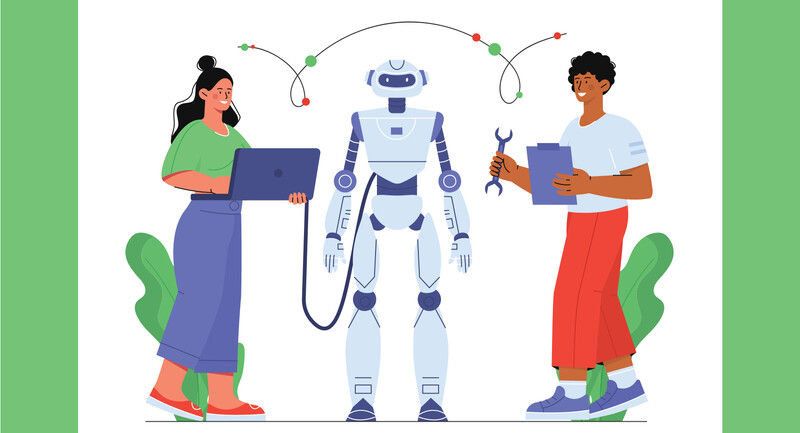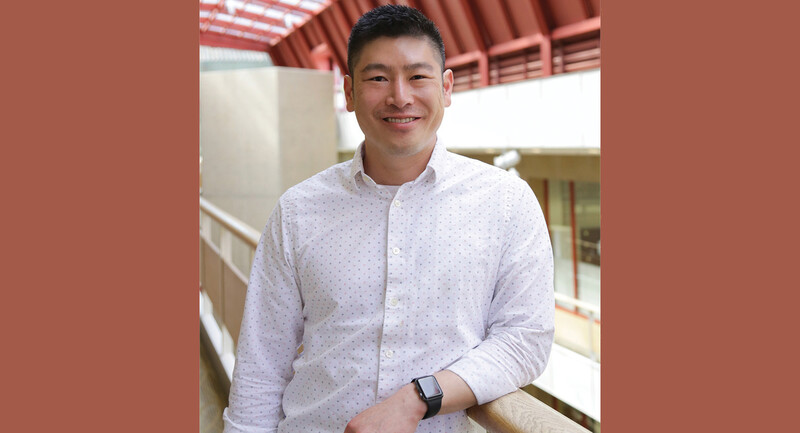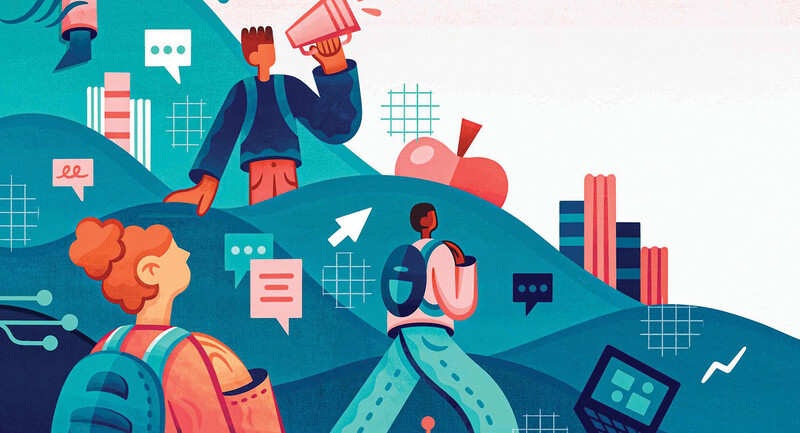Within the span of six weeks in the summer of 2016, even the most seasoned social media experts and journalists were feeling the aftershocks of yet another technology tipping point. On June 22, Congressional Democrats used their cell phones and the Periscope app to live-stream their sit-in at the House of Representatives to the world after C-SPAN cameras went dark. On July 6, the death of Philandro Castile during a traffic stop in St. Anthony, Minnesota, was streamed on Facebook Live via his girlfriend's cellphone, sparking a new wave of protests across the United States. And just a few days after that, Turkey's president put down a military coup in his country by using Apple's FaceTime app to talk to a CNN Turk anchorwoman, who held the phone up to her audience to broadcast his instructions. These events, and many others like them, signal how mobile technology is now creating ever more ubiquitous, complex, and immediate connections to the world.
Almost 5 billion people will carry mobile devices before the end of this decade (Richter, 2013). How do our kids (and we) make sense of the many streams of information—both text and multimedia, synchronous and asynchronous—that this technology now makes available for them to consume? How do they (and we) select the channels that will offer the most accurate and diverse lens for our understanding of the world? How do they (and we) create and contribute to those channels in ways that add value instead of just more noise? How do they (and we) build networks for continual learning? And how do they (and we) evaluate and adapt to the new ways of connection and creation that are certainly in our future?
Alison Gopnik (2016), a researcher and professor of psychology at the University of California, Berkeley, writes, "The new information economy, as opposed to the older industrial one, demands more innovation and less imitation, more creativity and less conformity." In other words, this isn't just about doing school "better." It's about transforming our work.
New Definitions of Essential Skills
Since the advent of the Web more than two decades ago, many have attempted to articulate the skills, new and old, that people need to navigate the complexities of modern life. Various organizations and experts have reached a general consensus about some of these skills.
Most well-known are the "4 Cs"—critical thinking, collaboration, communication, and creativity—identified by the Partnership for 21st Century Learning (n.d.). The Partnership has now expanded its framework to include an array of other skills and competencies, ranging from leadership to cross-cultural awareness to civic engagement.
Other frameworks, like the Mozilla Foundation's (n.d.) Web literacies, assert that the core literacies are the ability to "write, read, and participate" in online environments—for example, the ability to create through coding, to remix and publish Web content, to understand open content online, and to manage one's privacy and security when interacting online.
And in 2008 a more traditional education association, the National Council of Teachers of English, released a set of six literacies for "21st century readers and writers" that are still challenging for most teachers and students today:
Develop proficiency with the tools of technology.
Build relationships with others to pose and solve problems collaboratively and cross-culturally.
Design and share information for global communities to meet a variety of purposes.
Manage, analyze, and synthesize multiple streams of simultaneous information.
Create, critique, analyze, and evaluate multimedia texts.
Attend to the ethical responsibilities required by these complex environments.
Regardless of how we define the skills needed by today's global graduates, however, it's undeniable that these needs will continue to morph as our ability to create and share expands and as we face increasingly complex global challenges—climate change, workforce shifts, changing demographics, the growing global threat of terrorism and violence, and more. That's why, as the late Seymour Papert (1998) said,
The one really competitive skill is the skill of being able to learn …. We need to produce people who know how to act when they're faced with situations for which they were not specifically prepared.
Students Are Ready …
Regardless of their educational path, students moving into adulthood today need more than anything else to be voracious, passionate learners, adept at creating their own personal learning curriculum, finding their own teachers to mentor and guide them in their efforts, and connecting with other learners with whom they can collaborate and create.
Kids already demonstrate many of these dispositions in their out-of-school pursuits. This past summer, the Pokémon Go craze exploded among adolescents and adults alike. Most young players have a deep knowledge of the more than 150 Pokémon characters and various strategies for playing the game. From the day of the app's release, online Pokémon Go communities of game players sprang up to share hacks on game play and to exchange information on where and how to capture the most sought-after creatures. No one was waiting for a course or workshop.
A similar scenario describes kids who learn to play Minecraft, primarily through YouTube videos and gaming communities. No documentation or manual was released for Minecraft when the game debuted in 2011. Game players had to learn literally everything about the game on their own or from other players.
When we observe kids learning Minecraft or Pokémon Go—or the millions of other things that are meaningful to them—it's not hard to see the dispositions that are required for dealing with a fast-changing world: aspiration, or wanting to learn a new skill; self-awareness, or knowing what we know and don't know; vulnerability, or a willingness to see yourself as a perpetual beginner; and relentless curiosity (Anderson, 2016). The reality is that children are powerful learners by their very nature. They are driven by a passion to master certain skills or answer interesting questions that have some immediate application in their lives. Their curiosity drives them, and they show persistence that we rarely see in the classroom.
… But Schools Aren't
So the good news is that we don't need to develop students' learning dispositions in schools. We just need to maintain and strengthen the dispositions they already have.
The bad news, however, is that new research suggests that traditional schooling may actually discourage these dispositions. For example, in one experiment described by Gopnick (2016), 4-year-olds were much less likely to find their own solutions to making a complicated toy work when the experimenter "taught" them ("I'm going to show you how my toy works") than when the experimenter allowed them to observe her trial-and-error efforts and think about the problem ("Hmmm … I wonder how this toy works?"). As Gopnik writes,
Studies show that explicit instruction, the sort of teaching that goes with school and "parenting," can be limiting. When children think they are being taught, they are much more likely to simply reproduce what the adult does, instead of creating something new.
If we're honest with ourselves, we know that current school structures that force kids to learn the same thing on the same day in the same place with other kids their same age with the same teacher going through the same curriculum to be assessed in the same way are not built on any sound theory of learning. It flies in the face of common sense to think that this approach will produce the powerful learners we're discussing here. If we're truly committed to developing every student's ability to learn how to learn, we're going to have to rethink our practice.
The Changes We Need
How do we change our work in schools to place the emphasis on developing students as voracious, continual learners? It's not an easy task, considering the centuries of history, practice, and nostalgia that are such a deep part of the current narrative of schooling.
1. Articulate the Abilities Needed
To begin, schools need to clearly articulate the abilities that they need to develop in students. For example, the Albemarle, Virginia, School District has identified a dozen "Lifelong Learner Competencies" that are the focus of practice in the classroom. They include things like
Gather, organize, and analyze data; evaluate processes and products; and draw conclusions.
Think analytically, critically, and creatively to pursue new ideas, acquire new knowledge, and make decisions.
Apply and adapt a variety of appropriate strategies to solve new and increasingly complex problems.
Participate fully in civic life, and act on democratic ideals within the context of community and global interdependence.
Apply habits of mind and metacognitive strategies to plan, monitor, and evaluate one's own work.
2. Create Deep Learning Cultures
Second, schools need to move toward creating deep learning cultures. As it stands now, most school cultures are more teaching-oriented than learning-oriented, and those are two very different environments (Senge, et al., 2012). In a school with a learning-oriented culture, everyone in the system is seen as a learner, not just the students. Teachers and students alike are pursuing questions that interest them.
A report issued by the Organisation for Economic Co-operation and Development (OECD) (Kools & Stoll, 2016) argues that a move toward more learning-oriented school cultures involves
Developing and sharing a vision centered on the learning of all students.
Creating and supporting continuous learning opportunities for all staff.
Promoting team learning and collaboration among all staff.
Establishing a culture of inquiry, innovation, and exploration.
Embedding systems for collecting and exchanging knowledge and learning.
Learning with and from the external environment and larger learning system.
Modelling and growing learning leadership.
To create such a culture, educators at the American School of Bombay use what they call a dual operating system—one part based on teaching and learning, and the other driven by research and development. The latter was created to "explore, study, prototype, research, and scale new practices, approaches, and systems for the future of our students." This research and development strand means that in almost every classroom, teachers are learning alongside their students (Luthra & Hoffman, 2015).
3. Free Students to Pursue Their Interests
The third essential shift in our work in schools is to free students to pursue their own learning interests and goals in the classroom. As educator John Spencer (2016) says, "Student choice is more than simply choosing a topic. It is about empowering students through the entire learning process." Spencer suggests that students be allowed to select the topic, questions, content, materials and resources, strategies, scaffolding, audience, format, and groups to work with. All of this prepares students for times when they won't have a teacher by their side.
At the Mosaic Collective, an innovative school within a school in the Castle View School District in Colorado, high school students are invited to "invent your education." The mission is to "promote the bliss of intrinsic learning and a strong focus on community by intentionally practicing and reflecting on what is good for learners—of all ages and backgrounds." Mosaic students pursue independent projects they deem interesting, such as writing and publishing magazines about the local community, designing and building a better skateboard, and composing and performing a piece of music. Teachers serve as colearners who lend guidance and expertise when needed or requested. The focus is on learning how to learn.
In the Apollo program in the Central York, Pennsylvania, School District, "students have a literal say in their education—a democratic voice." Students taking the Apollo course in grades 11 and 12 complete four independent projects and one group project, incorporating concepts and skills they learn throughout the semester in a cross-disciplinary structure fusing art, English, and social studies. As the school website explains,
A student might study poets of the Harlem Renaissance, making historical connections to the time period, while sculpting an abstract figure inspired by the literary and historical impacts. Along the way, students would attend lessons to guide them through the projects or to be influenced by other writers, artists, and time periods. They would also select standards from each subject area and connect them to various parts of their projects. (Bend-ED, 2016)
Of All the Knowledge in the Universe
Seymour Papert is also known to have wondered what "one-billionth of one percent of all the knowledge in the universe" we should be teaching in school. Now that we have access to so much knowledge, it's obvious that we can't teach it all. In essence, curriculum is just a best guess at what our kids need to flourish. As the world continues to shift, our odds of making the right guess are becoming increasingly small.
The new reality is that our students will be required to build their own curriculums, find their own teachers, and assess themselves as learners and doers in an increasingly complex variety of contexts. That is the work of new global-ready learners. And preparing them for it is the work of the modern school.









